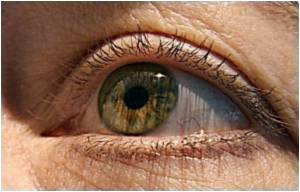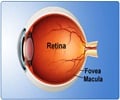Moderate aerobic exercise helps to preserve the structure and function of nerve cells in the retina after damage and may be able to slow the progression of retinal degenerative diseases.

Machelle Pardue, PhD, together with her colleagues Eric Lawson and Jeffrey H. Boatright, PhD, at the Atlanta VA Center for Visual and Neurocognitive Rehabilitation and Emory University, ran mice on a treadmill for two weeks before and after exposing the animals to bright light that causes retinal degeneration. The researchers found that treadmill training preserved photoreceptors and retinal cell function in the mice.
“This is the first report of simple exercise having a direct effect on retinal health and vision,” Pardue said. “This research may one day lead to tailored exercise regimens or combination therapies in treatments of blinding diseases.”
In the current study, the scientists trained mice to run on a treadmill for one hour per day, five days per week, for two weeks. After the animals were exposed to toxic bright light — a commonly used model of retinal degeneration — they exercised for two more weeks. The exercised animals lost only half the number of photoreceptor cells as animals that spent the equivalent amount of time on a stationary treadmill.
Additionally, the retinal cells of exercised mice were more responsive to light and had higher levels of a growth- and health-promoting protein called brain-derived neurotrophic factor (BDNF), which previous studies have linked to the beneficial effects of exercise. When the scientists blocked the receptors for BDNF in the exercised mice, they discovered that retinal function in the exercised mice was as poor as in the inactive mice, effectively eliminating the protective effects of the aerobic exercise.
“These findings further our current understanding of the neuroprotective effects of aerobic exercise and the role of BDNF,” explained Michelle Ploughman, PhD, who studies the effects of exercise on the healthy and diseased brain at Memorial University of Newfoundland, and was not involved with this study. “People who are at risk of macular degeneration or have early signs of the disease may be able to slow down the progression of visual impairment,” she added.
Advertisement















